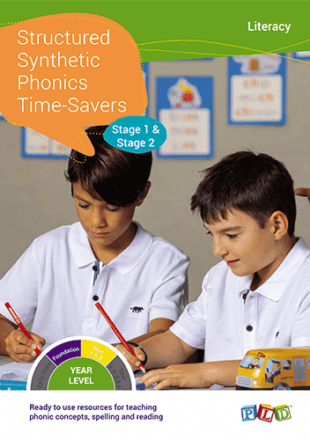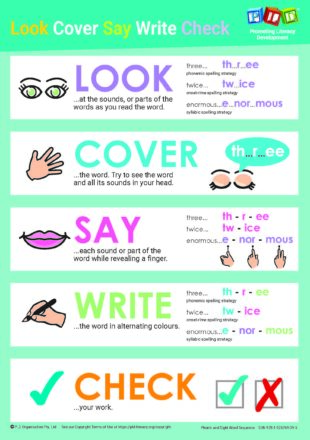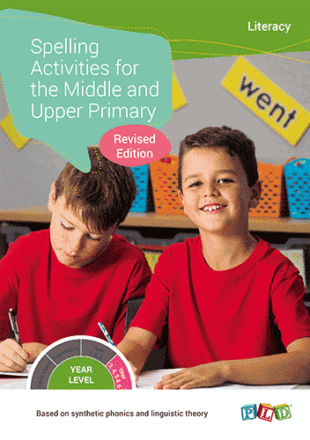Look-Cover-Say-Write-Check is a great strategy for children learning to spell. In this PLD insight, Diana Rigg discusses how to gain the maximum benefit from this technique and other PLD spelling activities.
The video demonstrates how to slow down and focus children on the process of learning to spell. You can download the “Look-Cover-Say-Write-Check” poster here. Print the poster to display in your classroom or as a reference guide on the table for your students. The poster downloads in PDF format so it can be used on an interactive whiteboard to reinforce concepts.
You may also wish to look at the following supportive PLD programs which may be useful for children at this stage of literacy and learning development.
- PLD Phonic and Sight Word Sequence: A planning document for scheduling graded PLD spelling tests for 5 to 11-year-olds.
- PLD Spelling Activities for the Junior Primary: A Junior Primary PLD spelling activities resource book that incorporates synthetic phonics and linguistic theory.
- PLD Spelling Activities for the Middle and Upper Primary: A middle and upper primary spelling activity resource book that incorporates synthetic phonics and linguistic theory
As always, if you wish to discuss any of the concepts in this video, we would love to hear from you. We hope that you enjoy the video and that it supports you in the classroom along with the PLD spelling activities in order to assist students in learning to spell.
About PLD Literacy
PLD provides an Australian, evidence-based approach to Structured Synthetic Phonics (SSP) for primary school educators. Aligned with the Science of Reading, PLD’s SSP approach extends from the junior primary years through to the upper primary years and facilitates a whole school approach.
PLD’s method is derived from the disciplines of speech pathology, occupational therapy and education. As an Australian publisher and professional development provider, PLD advocates that literacy and learning outcomes are maximised for children when their Literacy, Oral Language, Movement and Motor skills are targeted.
What is the Evidence Base for PLD?
Evidence-based teaching is now the norm within Australian schools. For our education standards to meet national and international benchmarks, schools need to invest in programs that are supported by research. This ensures schools are investing in what will produce results rather than just implementing what is a ‘fad’, visually appealing, or what has been done for years.
PLD’s Structured Synthetic Phonics (SSP) approach is based on international research and the resources are upgraded as new research becomes available. In addition, our programs are independently assessed by third-party researchers. This research has shown that when PLD programs are used, in conjunction with ongoing professional development and school-wide consistent screening and tracking, measurable differences occur. We would like to share with you three pieces of evidence-based research across three different education scenarios that show the difference that PLD can make to student outcomes.
PLD Underpins High Performance
The 2015 Department of Education Western Australia study, conducted by Professor William Louden, selected nine top-performing schools based on their NAPLAN results and reviewed their processes. The report, “High Performing Primary Schools: What do they have in common?” noted key characteristics included the use of explicit teaching strategies for teaching phonological awareness and phonics. PLD programs were commonly used in the schools investigated. Professor Louden found that high-performing schools used explicit teaching strategies for teaching phonological awareness and phonics through a Structured Synthetic Phonics (SSP) program.



 print
print


